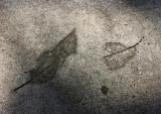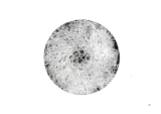Nature Reserves
I’m one of the artists contributing to the exhibition Nature Reserves, which opened to the public today at GV Art Gallery, London, and is running until the 13th September. This is a group exhibition on arts and science disciplines, archiving, knowledge storage and the natural environment, curated by Tom Jeffreys, editor of the Journal of Wild Culture, and last night there was a great private view and drinks. The entire catalogue, with the curator essay, photographs, and information on each of the works and specimen collections, can be read or downloaded here: GV-Art-Nature-Reserves-Catalogue. Below are some of the works, which include specimens and collections from the Grant Museum of Zoology, the South London Botanical Institute, and the UCL Geology Collections.
From the press release:
“GV Art is pleased to announce Nature Reserves, a new group exhibition curated by Tom Jeffreys. The exhibition seeks to examine human understandings of the natural environment, and features work across a rich range of media – photography, printing, sculpture, sound and projection – by 12 contemporary artists. In addition there are archival materials from a range of museums, universities and other institutions; field recordings of deceased species of birds; and an installation of a symbiotic colony of bacteria and yeast known as kombucha, from which visitors can take away samples to start their own culture at home.
Nature Reserves explores the way that our understanding of nature is influenced by different methods of constructing meaning – across literature, science and the arts – with specific reference to thinking around systems of archiving. Of particular interest is the two-way relationship between knowledge storage (classification, organisation etc) and knowledge creation, and the tangled effect this has on our changing conceptions of the natural world. Nature Reserves is also shot through with ideas around writing, printing and technology, as well as gender, legacy, death, domesticity and the problematic politics of collecting. In short, to borrow from the title of a work by Theresa Moerman Ib: what it means to leave an impression.
The thought processes behind the exhibition grew out of Splitters and Lumpers, a series of photographs by Liz Orton of as-yet unclassified plant specimens taken in the Herbarium at Kew Gardens. Around this central point extinct species are brought back to life in the sound work of Sally Ann McIntyre; Hestia Peppe explores the idea of memory in microorganisms; Amy Cutler splices twentieth century French poetry with dendrochronology samples; and Helen Pynor documents the decay of a 19th century insect collection.
Archival materials include European ferns collected in the early nineteenth century and held at the South London Botanical Institute; hand-specimens of volcanic rock from the Johnston-Lavis Collection, part of the Geology Collections at University College London; and labels dating back to the origins of the Grant Museum in 1828 that have since become separated from the specimens they once described. Nature Reserves does not simply name the places where nature is reserved – fenced off from poachers, preserved in aspic, locked away in cabinets – but also operates as a statement. Nature, too, reserves: enacts a storage of information – in cells and seeds and sedimentary layers – that operates with reference to an uncertain future to come.”
Above are some of the installation shots of my work, PINE. The blurb for my contribution to the exhibition follows.
“Amy Cutler is a poet, curator, writer and academic who is in the process of completing a PhD at Royal Holloway on coasts and forests in modern British poetry. Cutler has also written for various academic publications, and her debut collection of poetry, Nostalgia Forest, was published by Oystercatcher Press in 2013. Cutler has been the recipient of a number of awards, including National Winner, Best Film Education Programme in the British Federation of Film Societies Awards 2012 for her cultural geography cinema PASSENGERFILMS. She also edits the online series Land Diagrams and works on public engagement with research as an appointed ambassador for the National Co-Ordinating Centre for Public Engagement.
In June 2013, Cutler curated a critically acclaimed exhibition, Time, the deer, is in the wood of Hallaig at St John on Bethnal Green. The exhibition explored the properties of forest memory through text, archive, and ‘xylarium’, or wood collection. Art works examining the cultural expression of time and history in the forest were placed alongside archival photographs, small press texts, specimens, and museum objects, in an old, low-lit belfry designed by Sir John Soane.
Cutler has produced a new work for Nature Reserves entitled PINE which follows up some of the ideas in Nostalgia Forest and Time, the deer, is in the wood of Hallaig. The work aims to explore the perceived and real environmental storage of the past – in particular, the concept of “forest trauma” (a French horticultural term), and the recording of events in history into the flesh of timber as it grows, as
well as the public perception of this idea and its uptake as a metaphor for time and memory. It has been created in collaboration with the arborists at Connick Tree Care woodyard in Surrey, where dysfunctional timber is kept temporarily before chipping. These specimens are all too diseased, rotten, or strange in shape to be used as lumber. The work takes text from a famous French poem in memory studies, ‘Une connaissance inutile’, by Charlotte Delbo – part of a number of writings made about her time at Auschwitz, and used as an example of PTSD and the eternal return (a constant re-circling of experience of the original trauma). It is famous for her neologism, ‘je remeurs’; not an existing word in French, but often translated as ‘I re-die’. For Nature Reserves, two lines of the poem are projected onto a trunk slice of a pine tree, felled for disease and the significant structural damage of woodworms. Delbo’s words translate as ‘Tell me have I come back / from that other world?’ The incorporation of historical trauma in the growth of tree rings – revealed only by felling a tree and inspecting its internal calendar – resounds with Delbo’s writings on the reliving of past trauma: ‘As for me / I’m still there / and I’m dying / back there / every day a bit more / I re-die’. The work also plays with the double meaning of the word ‘pine’.”
Below are some of the images taken on my trip to Connick Tree Care’s wood yard in the process of planning the installed piece.
Exhibition : 26 July until 13 September 2013
GV Art gallery, London, 49 Chiltern Street, Marylebone, London W1U 6LY
Nature Reserves is supplemented by a programme of events, including dinners, workshops, interactive engagement and a panel discussion about taxonomies. Full details to be announced on http://www.gvart.co.uk.
For press enquiries and images contact:
GV Art on T: 020 8408 9800 | E: media@gvart.co.uk
GV Art is the UK’s leading contemporary art gallery which aims to explore and acknowledge the interrelationship between art and science, and how the areas cross over and inform one another. The gallery curates exhibitions and events that stimulate a dialogue focused on how modern society interprets and understands the advances in both areas and how an overlap in the technological and the creative, the medical and the historical are paving the way for new aesthetic sensibilities to develop.
GALLERY OPENING HOURS
Tuesday to Friday 11am – 6pm
Saturdays 11am – 4pm
or by appointment.
Admission Free
nearest tube Baker Street
Finally, below are a few photographs I took at the opening night last night, followed by the original press release for the exhibition. There are also plans afoot to feature a review of this exhibition in the next issue of Cultural Geographies, as the Cultural Geographies in Practice article.





























































Reblogged this on Landscape Surgery and commented:
Announcement of Nature Reserves, a public exhibition on art and science disciplines, archiving, knowledge storage and the natural environment, which opened today at GV Art Gallery, and includes work by Landscape Surgery Ph.D. candidate Amy Cutler